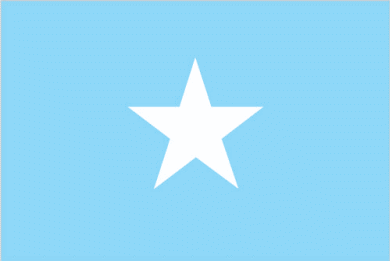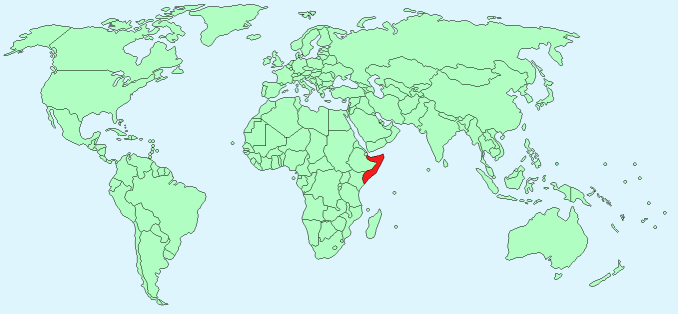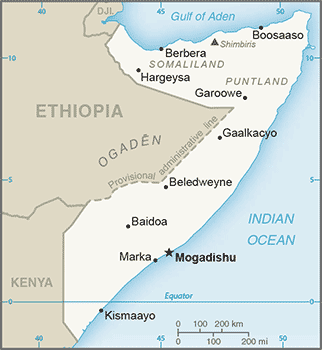Somalia


Continent – Africa
Region – Eastern Africa
Size – 627,337 km²
Geography – mostly flat plains with hills in the north
Language – Somali, Arabic, English, Italian
Religion – Sunni Muslim
Monetary Unit – Somali shilling
Natural Resources – uranium and largely unexploited reserves of iron ore, tin, gypsum, bauxite, copper, salt, natural gas, likely oil reserves
Agriculture – bananas, sorghum, corn, coconuts, rice, sugarcane, mangoes, sesame seeds, beans, cattle, sheep, goats, fish
Industry – light industries, including sugar refining, textiles, wireless communication

Neighbouring Countries – Ethiopia, Djibouti, Kenya
Population – 10,616,380 (2015 estimate)
Population Growth Rate – 1.83%
Average Life Expectancy – 51.96
Capital City – Mogadishu (2,138,000)
Highest Mountain – Shimbiris (2,416m)
Longest River – Shebelle (1,130 km)
Climate – Tropical – Hot all year 23°C to 34°C
Yearly Rainfall – 32 cm (approx) mostly April to August
Plant Life – Acacia thorn trees, aloes, baobab, candelabra trees, frankincense, myrrh, eucalyptus, mahogany, mangrove, kapok, papaya, coconut, dune palm, pine, juniper, cactus
Animal Life – elephant, lion, wildcat, giraffe, zebra, hyena, hippopotamus, waterbuck, gazelle, dik-dik, lizard, crocodile, turtle, porcupine, baboon, boar, puff adder, cobra
Bird Life – ostrich, duck, guinea fowl, bustard, partridge, green pigeon, sand grouse, aheron
Harvard Reference for this page:
Heather Y Wheeler. (2015). Somalia. Available: https://www.naturalhistoryonthenet.com/Facts_Figures/Country_Facts/somalia.htm. Last accessed Tuesday, July 19, 2016
Facts and Figures Pages
